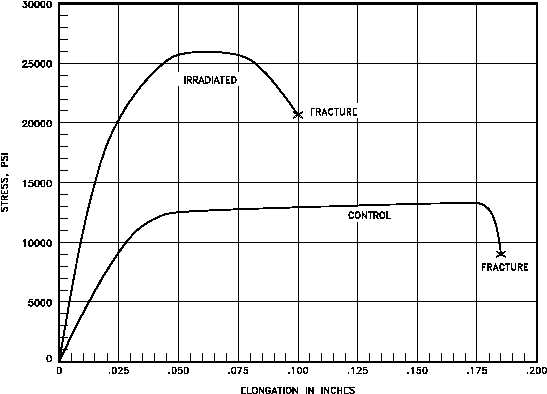REACTOR USE OF ALUMINUM
DOE-HDBK-1017/2-93
Plant Materials
Aluminum is attacked by both water and steam at temperatures above about 150C, but this
temperature can be raised by alloying with small percentages of up to 1.0% Fe (iron) and 2.5%
Ni (nickel). These alloys are known as aerial alloys. The mechanism of attack is attributed to
the reaction Al + 3H2O Al(OH)3 +3H+ when the hydrogen ions diffuse through the hydroxide
layer and, on recombination, disrupt the adhesion of the protective coating.
Aluminum-uranium alloys have been used as fuel elements in several research reactors. Enriched
uranium is alloyed with 99.7% pure aluminum to form the alloy.
Research has shown that radiation produces changes in both annealed and hardened aluminum
and its alloys. Yield strength and tensile strength increase with irradiation. Data indicates that
yield strengths of annealed alloys are more effected by irradiation than tensile strengths. The
yield strengths and the tensile strengths of hardened alloys undergo about the same percent
increase as a result of irradiation. Irradiation tends to decrease the ductility of alloys. Stress-
strain curves for an irradiated and an unirradiated control specimen are shown in Figure 8.
Figure 8 illustrates the effect of neutron irradiation in increasing the yield strength and the tensile
strength and in decreasing ductility.
Figure 8 Effect of Irradiation on Tensile Properties of 2SO Aluminum
MS-05
Page 50
Rev. 0

